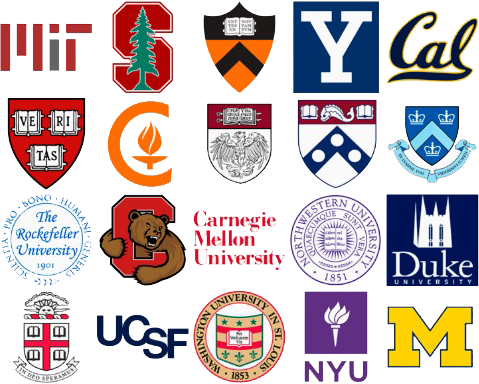The Master in Management (MiM) has emerged as one of the most sought-after postgraduate degrees for recent graduates looking to fast-track their careers in business and management. But when it comes to choosing where to pursue your MiM, two destinations often stand out: MiM in USA vs MiM in France. Both countries offer exceptional academic programs, rich cultural experiences, and promising career opportunities. However, the path to earning an MiM degree in these two regions varies significantly in terms of admissions requirements, costs, job prospects, and global recognition.
In the USA, MiM programs are typically aligned with the American business school structure, often focusing on practical, industry-oriented curricula with an emphasis on leadership skills. On the other hand, France’s MiM programs, particularly those offered by the prestigious Grandes Écoles, are deeply rooted in academic excellence, global exposure, and strong alumni networks.
So, if you’re an Indian student wondering whether to pack your bags for New York or Paris, this guide will break down the five key differences to help you make an informed choice. Let’s start with admission requirements, where the two countries follow distinctly different approaches.
1. Admission Requirements
MiM in the USA: Admissions Process
In the USA, MiM admissions prioritize academic excellence, standardized test scores, and clear career goals. Most American universities require applicants to have completed a 4-year bachelor’s degree, which aligns with the US higher education system. In addition:
- Standardized tests like the GMAT or GRE are often mandatory and play a crucial role in determining admission.
- For international students, English language proficiency tests such as TOEFL or IELTS are required, with minimum score requirements varying by institution.
- While prior work experience is not always mandatory, having internships or part-time professional roles significantly strengthens an application.
Deadlines in the USA usually follow a structured timeline, with the majority of MiM programs accepting applications for Fall intakes (August/September). The application cycle typically begins around December and extends until March.
MiM in France: Admissions Process
France’s MiM programs, particularly those offered by Grandes Écoles such as HEC Paris, ESSEC, and ESCP, have their own unique set of prerequisites. These schools are renowned for their rigorous selection processes, which often combine academic performance, entrance exams, and personal interviews. Key requirements include:
- A 3-year bachelor’s degree is often sufficient for many French MiM programs, making it more accessible for Indian students.
- Standardized tests like the GMAT or TAGE-MAGE are commonly required, with certain schools offering flexibility based on academic excellence.
- While fluency in French is not always mandatory for admission, proficiency can greatly enhance internship and job placement opportunities in France.
One notable advantage of studying in France is the flexibility in admission cycles. Many institutions offer rolling admissions or have multiple intakes, including Fall and Spring sessions.
Comparison of Application Timelines
- USA: Structured Fall intake, with deadlines typically between December and March.
- France: Flexible timelines, with options for Fall (September) and sometimes Spring (January/February) intakes.
Overall, while the USA emphasizes standardized testing and structured admissions cycles, France offers greater flexibility and caters to a broader range of academic backgrounds.
2. Average Salaries After Graduation

Salaries in the USA: High Earning Potential with Industry Variations
Graduating with an MiM degree from a top-tier American business school often opens doors to some of the most lucrative entry-level positions in industries such as finance, consulting, and technology. On average, MiM graduates in the USA can expect starting salaries ranging between $60,000 and $80,000 per year. However, salaries can vary significantly depending on factors like location, industry, and the university’s prestige. For instance, graduates working in financial hubs such as New York City, San Francisco, or Chicago often command salaries at the higher end of the spectrum.
American MiM programs are known for their strong industry connections and robust career services, which play a crucial role in securing competitive job offers. According to data from the US Bureau of Labor Statistics (BLS), the demand for management professionals is projected to grow steadily, adding further value to an MiM degree from the USA.
Another significant advantage lies in the Optional Practical Training (OPT) period, which allows international graduates to work in the USA for up to 12 months, with an extension of up to 36 months for STEM-designated programs. This flexibility ensures that MiM graduates have ample time to secure a foothold in the competitive US job market.
Salaries in France: Competitive Earnings with Sector-Specific Opportunities
In France, MiM graduates from top Grandes Écoles can expect starting salaries averaging between €35,000 and €45,000 per year. While these numbers might seem lower than their American counterparts, it’s important to consider factors like lower living costs in many French cities (excluding Paris) and affordable healthcare systems, which balance out the earning potential. One standout feature of French MiM programs is their strong emphasis on internships and corporate partnerships, often embedded within the curriculum. This ensures that students graduate with not just academic knowledge but also hands-on industry experience, making them highly employable.
Industries such as luxury goods, finance, automotive, and consulting are particularly lucrative for MiM graduates in France. In cities like Paris and Lyon, salaries in these sectors can surpass the national average, especially for graduates of elite institutions like HEC Paris or ESSEC Business School. Additionally, France offers the APS (Autorisation Provisoire de Séjour), a temporary residence permit allowing international students to stay in the country for 12 to 24 months after graduation to look for employment. This post-study work option ensures graduates have ample time to transition into full-time roles.
A Comparative Outlook
While the USA generally offers higher salaries, especially in finance and tech industries, France compensates with lower tuition fees, affordable living costs, and a strong internship-driven model. Choosing between the two ultimately depends on your career goals, industry preferences, and geographical aspirations. If your goal is to earn a high salary immediately after graduation and work in sectors like finance or technology, the USA might be the better choice. On the other hand, if you prefer a balanced lifestyle, lower costs, and opportunities in Europe’s luxury and finance sectors, France could be the ideal destination.
3. Program Fees & Funding: MiM in USA vs MiM in France
Frustrated with Generic College Lists from AI Tools?
Get a tailored college shortlist crafted by study abroad experts who understand YOUR goals, profile, and aspirations.

Fee Structure in the USA: A Significant Investment
Pursuing an MiM degree in the USA often requires a substantial financial commitment. Tuition fees for MiM programs at top American business schools typically range between $35,000 and $60,000 per year. Some premium institutions may even exceed this range, especially when additional expenses like housing, insurance, study materials, and living costs are factored in.
One of the key reasons behind these higher costs is the extensive industry integration, world-class infrastructure, and globally recognized faculty that American universities offer. Additionally, the USA’s emphasis on experiential learning, including capstone projects and industry immersions, further adds to the value—and cost—of an MiM program. However, many universities offer scholarships, assistantships, and financial aid to deserving international students. Prominent funding options include the Fulbright Scholarship, university-specific grants, and need-based financial aid programs. Despite the high upfront cost, the USA’s high earning potential and global recognition of degrees often result in an attractive return on investment (ROI) over time.
Fee Structure in France: Affordability with Quality
France, on the other hand, offers a more cost-effective path to an MiM degree without compromising on quality. Tuition fees at Grandes Écoles typically range between €10,000 and €25,000 per year, while public universities charge significantly lower fees, often around €200 to €600 per year for European Union (EU) students. For non-EU students, the fees are generally higher but still considerably more affordable than in the USA.
This affordability is further supported by government subsidies and initiatives aimed at making higher education accessible to international students. Additionally, students in France can apply for well-known scholarships such as the Eiffel Excellence Scholarship, regional government grants, and university-specific funding opportunities. The lower tuition fees, coupled with affordable living costs in cities outside Paris, make France an attractive option for students who want to pursue an MiM degree without accumulating heavy financial debt.
Funding Opportunities: USA vs France
Both countries offer various funding options, but they differ in availability and structure.
- In the USA, students often rely on university grants, private loans, and merit-based scholarships. Many programs also offer teaching assistantships or research assistantships that partially cover tuition costs.
- In France, students benefit from government-funded scholarships like the Eiffel Scholarship, as well as corporate sponsorships for top-tier schools. Additionally, students often secure paid internships during their studies, which can offset living expenses.
Return on Investment (ROI): A Long-Term Perspective
When evaluating tuition fees and funding options, it’s essential to consider the ROI of an MiM degree. Graduates from American MiM programs generally see quicker returns on their investment due to higher starting salaries and expansive job markets. Meanwhile, graduates from French MiM programs benefit from lower initial financial burdens and strong employment prospects across Europe, Africa, and parts of Asia.
In summary, if you’re looking for a premium educational experience with high earning potential and strong ROI, the USA might be your preferred choice. However, if affordability, scholarships, and global exposure across Europe appeal to you, France could be the ideal destination.
4. Job Opportunities & Post-Study Work (PSW)

Job Market in the USA: Diverse Opportunities with Immigration Hurdles
The USA remains one of the world’s most attractive destinations for career opportunities after completing an MiM degree. With a robust economy and a thriving corporate landscape, MiM graduates often find themselves in high-demand sectors such as finance, technology, consulting, and healthcare management. Cities like New York, San Francisco, Chicago, and Boston are hotspots for fresh graduates, offering competitive salaries and opportunities for rapid career growth.
However, international students face challenges when it comes to securing long-term employment. While the Optional Practical Training (OPT) program allows students to work in the USA for up to 12 months (or 36 months for STEM-designated MiM programs), the transition to an H-1B visa remains a significant hurdle. The H-1B lottery system is highly competitive, and securing sponsorship from an employer can be uncertain. Despite these challenges, top-tier business schools in the USA maintain strong career services departments and industry connections, often facilitating direct placements through career fairs, internships, and on-campus recruitment programs.
Job Market in France: Europe’s Strategic Business Hub
France has positioned itself as a central player in the European job market, especially for industries like luxury goods, finance, technology, and automotive. Cities such as Paris, Lyon, and Marseille host multinational corporations and regional headquarters, making them ideal for MiM graduates seeking employment in Europe.
One of the significant advantages of studying in France is the APS (Autorisation Provisoire de Séjour), which grants international students 12 to 24 months to stay in the country and look for full-time employment after graduation. Unlike the USA, this system offers greater flexibility and reduces immigration-related uncertainties. Language, however, plays a crucial role in securing jobs in France. While many roles in multinational companies and global industries do not require fluency in French, proficiency can open doors to local organizations and significantly enhance job prospects.
Moreover, MiM graduates from Grandes Écoles often benefit from extensive alumni networks that span Europe, Africa, and parts of Asia. This network, coupled with France’s emphasis on internships and corporate collaborations, ensures that students graduate with practical experience and strong industry connections.
Work Visa and Post-Study Pathways: A Clear Difference
- In the USA, securing long-term work authorization depends heavily on the H-1B visa system, which is both competitive and unpredictable.
- In France, the APS permit provides a more stable pathway for international students, offering a buffer period to secure employment after graduation.
Employment Landscape: USA vs France
While the USA offers higher salaries and a vast range of job opportunities, it also comes with visa-related challenges and intense competition. On the other hand, France provides a smoother post-study work pathway, strong corporate ties across Europe, and an affordable cost of living in many cities outside Paris. If you’re someone looking to enter highly competitive industries like technology, finance, or consulting, and you’re prepared for immigration hurdles, the USA may be your ideal choice. However, if you’re drawn to a stable visa system, access to the European job market, and strong internship opportunities, France offers a compelling advantage.
5. Global Value & Recognition
USA’s Global Recognition: Prestige and Growing Popularity
In the USA, the MiM degree is a relatively newer addition to the academic landscape, especially when compared to the globally recognized MBA programs offered by American universities. Despite its shorter history, the MiM degree in the USA has gained considerable traction over the past decade, thanks to its strong emphasis on practical skill development, industry immersion, and leadership training.
Top American business schools, including Duke University (Fuqua School of Business), University of Michigan (Ross School of Business), and Northwestern University (Kellogg School of Management), have pioneered some of the most well-regarded MiM programs globally. These institutions bring with them the prestige of their established MBA programs and a vast network of alumni spanning across every corner of the world.
The USA’s MiM programs are also closely aligned with global industry needs, with strong connections to leading corporations, particularly in sectors such as finance, technology, and consulting. Graduating from an American MiM program not only boosts your employability in the US but also holds significant weight in other international markets, including Asia, the Middle East, and parts of Europe. However, it’s worth noting that while MiM degrees in the USA are highly valued, they are still catching up to the legacy and recognition associated with MBAs in the region.
France’s Global Recognition: The Grande École Advantage
France has long been considered the birthplace of the modern MiM degree, with institutions like HEC Paris, ESSEC Business School, and ESCP Business School leading the global rankings year after year. The Grande École system is synonymous with academic excellence, elite networks, and unmatched global credibility. The prestige of French MiM programs extends far beyond national borders, particularly in Europe, Africa, and select regions of Asia. Graduates from France’s Grandes Écoles often find doors opening across multinational corporations, global NGOs, and even entrepreneurial ventures.
One of the standout features of French MiM programs is their emphasis on cross-border mobility and international exposure. Many programs include mandatory exchange semesters or internships abroad, ensuring students graduate with a truly global perspective. Furthermore, the alumni networks of these institutions are deeply integrated into influential sectors such as luxury, finance, consulting, and technology. This connection often translates into exclusive job opportunities and mentorship programs for MiM graduates.
Where MiM is More Popular: USA or France?
The MiM degree has a longer history and deeper roots in Europe, with France leading the way in terms of legacy, global rankings, and alumni networks. In contrast, the USA’s MiM programs are newer but rapidly growing in stature, particularly in industries like technology and finance. If your career ambitions are centered around Europe, international organizations, or luxury sectors, a French MiM—especially from a Grande École—might offer unparalleled advantages. On the other hand, if you’re targeting dynamic industries in the USA, access to American corporate giants, or higher immediate salaries, an MiM from the USA could be your golden ticket.
Key Takeaway: Global Prestige and Opportunities
- USA: Strong global recognition, particularly in corporate-driven industries like tech and finance, with increasing acceptance of MiM degrees worldwide.
- France: Established global reputation through Grandes Écoles, deep-rooted industry connections in Europe, and unparalleled alumni networks across multiple continents.
Ultimately, the choice between an MiM in the USA and France comes down to your long-term career goals, target industries, and preferred geographical focus. Both countries offer exceptional academic experiences and valuable career opportunities—it’s about aligning them with your unique aspirations.
FAQs: Frequently Asked Questions About MiM in USA vs MiM in France
Is French proficiency mandatory for studying MiM in France?
No, many top MiM programs in France, especially those offered by Grandes Écoles like HEC Paris, ESSEC, and ESCP, are fully taught in English. However, learning French can significantly improve your experience, especially when it comes to internships, networking, and job opportunities in local companies.
Which is more expensive—USA or France?
MiM programs in the USA are generally more expensive, with tuition fees ranging from $35,000 to $60,000 per year. In contrast, French Grandes Écoles charge between €10,000 and €25,000 per year, with public universities offering even lower fees. However, living costs should also be factored into your budget, with cities like New York and Paris being more expensive than smaller towns.
Do companies in the USA sponsor H-1B visas for MiM graduates?
Yes, many US companies sponsor H-1B visas for skilled international graduates, including MiM students. However, the process is competitive due to the H-1B visa lottery system. STEM-designated MiM programs offer an advantage, allowing graduates to extend their Optional Practical Training (OPT) period up to 36 months.
What if I want to settle in France after graduating?
After completing an MiM in France, international graduates can apply for an APS (Autorisation Provisoire de Séjour), which allows them to stay in France for 12 to 24 months to find employment. Once employed, this can transition into a full-time work visa, making it a more straightforward process compared to the USA.
Which country provides better networking opportunities?
Both the USA and France offer excellent networking opportunities but differ in scope. In the USA, networking is more corporate-driven, with connections often made through internships, on-campus events, and alumni networks. In France, the Grande École system provides a prestigious and exclusive alumni network deeply embedded across Europe and beyond.
Conclusion: Choosing Your Ideal MiM Destination
When it comes to pursuing an MiM degree, both the USA and France offer exceptional opportunities, but they cater to different priorities and career paths. If you’re drawn to higher salaries, access to global tech and finance hubs, and long-term opportunities in corporate America, the USA should be your go-to choice. On the other hand, if you’re looking for a cost-effective education, access to the European job market, and the prestige of the Grande École system, France might be the perfect fit.
Here’s a quick recap of the key differences:
- Admissions: Structured, test-heavy in the USA; flexible, with diverse entry pathways in France.
- Salaries: Higher starting salaries in the USA; competitive salaries balanced with lower living costs in France.
- Program Fees: Significantly higher in the USA; relatively affordable in France.
- Job Opportunities: Competitive job market and visa hurdles in the USA; smoother post-study work pathways in France.
- Recognition: USA offers global corporate recognition; France excels in legacy networks and European market influence.
Your Decision, Your Future
Ultimately, the best choice depends on your goals, budget, and career aspirations. Whichever path you choose, both destinations offer the tools, resources, and networks to build a successful global career. If you’re still unsure, consider reaching out to study-abroad consultants, alumni, or academic advisors to get personalized insights. Your MiM journey is a significant step, and making an informed choice will set the foundation for a thriving career ahead.



